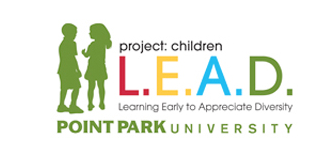Lesson 5 Physical Differences Lesson Series

Curriculum | Resources | Workshops | Activities | About Us
Physical Differences
Teacher: Eleanor Vistein
Project Children L.E.A.D. Director: Dr. Vincenne Revilla Beltran
Subject Area: Diversity
Grade level: Kindergarten (Ages 5-6)
Length of Lesson: 60 minutes
Learning goals based on Pennsylvania Academic Standards, N.A.E.Y.C. Standards or Early Childhood Learning Continuum Indicators: The students will be able to recognize physical differences and similarities in people including but not limited to hair, eye, and skin color. They will also be introduced to physical disabilities.
Arts and Humanities
9.1. E. Demonstrate the ability to define objects, express emotions, illustrate an action or relate an experience through creation of works in the art.
Language Arts
1.6. A.
-
Listen to others when they are speaking and demonstrate understanding of the message.
-
Ask questions to obtain clarifying information.
-
Listen to a selection of literature
-
Listen to a selection and connect similar experiences to real life experiences
Math
2.3. H. Identify and describe different attributes of objects
Health, Safety, and Physical Education
10.4. F. Recognize positive and negative interactions of small group activities.
-
Roles (e.g. leader, follower)
-
Cooperation/sharing
-
On task participation
OBJECTIVES: The children will be able to recognize differences and similarities in people's appearances and abilities. The children will each assume the role of a person with a disability while participating in a cooperative activity.
MATERIALS AND EQUIPMENT NEEDED:
-
Book: Hallinan, P.K. A Rainbow of Friends. Ideals Children's Books, 1994. ISBN: 0-8249-8657-1
-
Wheelchair
-
Blindfold
-
Ball
-
Large, deep container to throw the ball into - We used a clean trash can.
-
Masking tape to mark a two foot diameter around the trash can
-
Multicultural paint
-
Paint
-
Paintbrushes
-
Paper
-
Chalk and chalkboard for marking score
ADAPTATIONS AND ACCOMMODATIONS TO DIFFERENTIATE INSTRUCTION:
I chose the children's partners for the blindfold activity to ensure that each child was comfortable with the partner who was leading them while wearing the blindfold.
PROCEDURES:
REVIEW: Show the children the cover of the book and ask them to tell you about the children that are illustrated. If the child in the wheelchair is not mentioned by one of the children, bring it to their attention. Ask the children if they know anyone with a disability. Make a KWL chart to see what they know about physical differences, what they want to find out, and what they learned during the lesson.
INTRODUCE: Read the book, A Rainbow of Friends, as a springboard into the lesson.
DEVELOP:
-
Revisit the book to review the pictures.
-
Ask the children, "Why do you think this book is called "A Rainbow of Friends?" Children's responses should include that the children have different colors of skin, hair, eyes, and clothes.
-
Show the page where the boy is in the wheelchair playing ball. What is different on this page? (The boy is in a wheelchair.) What is the same about these children? (They are all working and playing together.)
-
We are going to play a game of ball like the children in the book. We are also going to see what it feels like to play ball while in a wheelchair.
-
Divide the children in to two teams. Tell the children the rules for the game. You can make rules suited to your children and your classroom. Our rules are as follows:
-
You may hit the ball out of a child's hands, but you may not hit or push the child.
-
Only one child from each team may be within the two foot perimeter of the can at a time.
-
The children will take turns sitting in the wheelchair to play the game. Once a basket is scored, a different child sits in the chair.
-
The first team to score three balls in the can wins.
-
-
Have the children sit in the circle area after the game to discuss the game.
"What do you think about this game? How did it feel to play the game in a wheelchair?"
-
Revisit the book to show the children the expression on the face of the boy
in the wheelchair. Point out that he is happy to play with his friends.
-
Show the page in the book where a blind boy with a seeing eye dog is
being welcomed by a friend.
-
Tell the children they are going to participate in an activity with a partner
to experience what it feels like when you can't see and you need to depend on someone else to guide you.
-
Blindfold one of the children and have a partner lead him safely around
the room. Give each child a turn.
-
Have the children sit in the circle area. Explain the similarity between the
role they played as a guide to the blindfolded child and the role a seeing eye dog plays.
-
Revisit the book to view the cover. Review how the children look the
same and how they look different. "We recognize people because of the way they look."
-
Tell the children they are going to do a painting activity where they need
to look very closely at a friend so they can paint that friend's portrait.
-
Partner the children to paint each others' portrait using paint that matches
their skin, hair, and eye color.
-
Have the children return to the circle area to complete the KWL chart.
ASSESS: The children will be assessed through observation and the KWL chart.
ASSIGN: Plan independent center activities. Provide the children with books about physical differences in the book center, physical disability equipment for the dolls in the drama area, and pictures in the art area.
CLOSE: Tell the children, "Today we learned that people can look different, but inside, we all have the same feelings."

